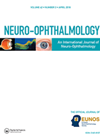
Journal Reviews
Correlation between aqueous flare and macular microvascular status in diabetes mellitus
The authors report a cross-sectional study which was conducted to investigate the correlation between aqueous flare and macular microvascular status, assessed by optic coherence tomography angiography (OCTA) in diabetes mellitus. Fifty-two diabetic patients with non-proliferative retinopathy, 44 diabetic patients without...
Rebound phenomenon after IVT triamcinolone acetonide for macular oedema
In this retrospective study, the authors report the rebound phenomenon after intravitreal triamcinolone acetonide (IVTA) injection for macular oedema secondary to diabetic retinopathy (DR) and central (CRVO) or branch retinal vein occlusion (BRVO). The incidence of a rebound phenomenon was...
Pupil responses in diabetes
This study aimed to investigate pupillary involvement in patients with type 2 diabetes mellitus (DM) and to evaluate any relationship between severity of diabetic retinopathy (DR) and pupillary responses. Participants included 133 individuals in four groups: proliferative DR (n=21), non-proliferative...
ANGPTL-4 inhibition reduces inflammation in diabetic retinopathy
Diabetic retinopathy (DR) is the most common cause of blindness in working-age humans, and numbers are rising due to increased cases of type 2 diabetes (T2D). T2D is associated with increased obesity and dyslipidaemia, which is a major risk factor...
Somatostatin protects retinal pericytes
Diabetic retinopathy (DR) is a complication of diabetes, caused by high blood sugar levels damaging the retinal microvasculature. Mechanisms, such as oxidative stress and deposition of advanced glycation end products, leads to glial cell activation and neuronal apoptosis. Pericytes, contractile...
A possible biomarker for diabetic retinopathy
Diabetic retinopathy (DR) is the most common form of diabetic eye disease, characterised by exudates, microaneurysms and haemorrhage. Early diagnosis is crucial for preventing visual loss. The risk of developing diabetic retinopathy is known to increase with age as well...









